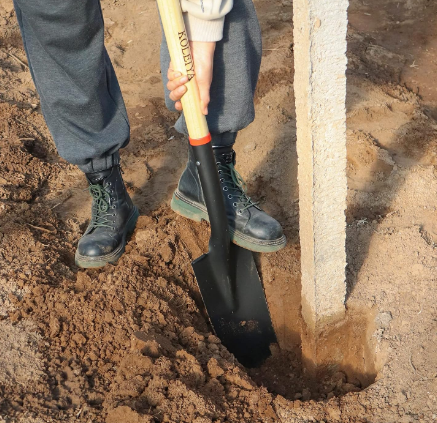
Garden Sprinklers Lawn Sprinkler: Effortless Watering for a Lush and Vibrant Landscape
November 24, 2024
Experience the Delight of Freshly Grown Bushel Berry Raspberry – A Sweet and Tangy Treat!
December 4, 2024Using sluggish tools can turn the pruning task into an unpleasant chore. Sharp garden scissors require less effort, which may not be noticeable when cutting small green stems, but can make a huge difference when cutting thicker, woody materials. The sharp edges on the tool also allow the incision to be clean, heal faster, and avoid crushing or tearing the plant tissue, which increases the likelihood of disease. Here’s how to sharpen garden scissors that can’t be cut cleanly. The following steps apply to bypass pruning shears, anvil pruning shears and pruning shears.

What You’ll Need
Equipment/Tools
- 1 Wrench for installing the tool
- 1 File (fine or medium-coarse)
Material
Supplies
- Rag
- Household cleaner or rubbing alcohol
- Scrub pads
- Steel wool
- WD-40 or other solvents
- Tool oil (3-in-1 or similar)
Instructions
In general, all garden shears can be sharpened through the same steps: disassembly, cleaning, sharpening the blade, and reassembling and oiling. However, some tools can be partially or completely disassembled, and some cannot. If your tool can be broken down into multiple parts, the job of cleaning and sharpening the blade becomes much easier. However, if yours are not separated, skip the first step and proceed with the rest.
Warning: Sharpening the blade requires the use of very sharp edges. Pay attention to safety work and slowly reduce accidents.
1. Disassemble the tool
Many garden shears and cutters are assembled with bolts so that they can be disassembled. They could be hex heads, hex socket bolts, or even screws. Grasp the correct wrench and loosen the bolt, careful with the edge of the blade. Just because it needs to be sharpened doesn’t mean it won’t cut you if your wrench or hand slips.
Turn the wrench counterclockwise (remember to loose on the left, tight on the right) and remove one or more bolts to remove the scissors. Be careful with small parts such as lock washers, spacers, and nuts. Place each section in order.
Tip: Work on a clean counter or table and keep the tool close to the surface. If interior parts accidentally come off, you don’t need to look for them on a dirty garage floor or grass. Take a photo before you start so you can see how the pieces should fit back together.

2. Clean and dry all parts
Over time, scissors can become dirty from plant residues, sap, and dirt. Garbage and sharp edges don’t mix, and if the pruning shears are clean, you’ll be more likely to sharpen and use the pruning shears. Residue can also build up and force the blades apart, making it difficult to get a clean cut no matter how sharp the blade is.
Use hot, soapy water and a rag to clean the blades. If you have stubborn juices that need to be removed, household cleaners or rubbing alcohol will usually do the trick. Carefully wipe with a scrubbing pad until all dirt is removed.
If rust removal is required, use steel wool and some penetrating solvent (e.g., WD-40) or rust remover. Continue working until the surface is smooth, even if it still loses its luster.
When everything is clean, rinse the tool parts with water and dry thoroughly.
3. Sharpen the blade
This is actually the easiest part of the whole process. Look at the blades of the pruning shears and find the angled edges, called bevels. It usually appears only on one side of the pruning scissor blade (unlike knives that have bevels on both sides).
The beveled side of the pruning blade is the only one that is sharpened. Don’t use a file to sharpen (and bevel) on the flat side – this will ruin the cutting effect of the blade, and you’ll have to replace it.
To sharpen the beveled edge, grasp the file handle firmly, but only with gentle force. The file works without much effort. Push the file through the blade in only one direction, matching the bevel. Don’t use the file in both directions like a saw; use it in one direction, like petting a cat. File the entire bevel until it shines. It won’t be too long, but it’s not just a few strokes. Be patient and work slowly with good control. When you’re done, check the shiny edges for any notches and continue filing until there are none. A notch is a blunt spot that will tear or crush rather than be cut cleanly.
Tip: If you notice a slight burr forming on the other side of the blade due to the filing process, you should remove it. Place the file completely flat on the back of the blade and gently thread it through the burr. Just give it a gentle stroke or two.
4. Oil the scissors and reassemble them
Apply a very thin layer of oil to the metal parts with a rag and reassemble them. Be very careful when using a freshly sharpened blade to avoid injury.
Tighten the bolts tightly, but don’t tighten them anymore. Overtightening can make the next disassembly more difficult, and overtightening the hinge bolts can make your garden shears difficult to operate. If you feel too hard when trying to open the scissors, loosen the bolt slightly until the blades move easily.



